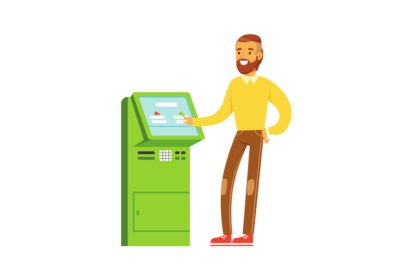Not all e-commerce orders are successful, with the delivery being made. Some products have issues that are revealed only when the package is opened, some customers often end up becoming unhappy with the product or delivery, etc.
Mind you, these are not isolated incidents, 30% of all e-commerce orders are returned by consumers (2x -3x more than brick-and-mortar rates).
Product returns are an inevitable and frequent part of E-commerce.
But for many merchants, tracking these returns can be a real hassle. Shipments might get lost. Refunds might get delayed. And you might struggle with visibility over the entire process. These not only become a headache for the merchant but also lead to a poor customer experience.
That’s why you need solid, reliable e-commerce return tracking. It can help you streamline returns operations and enjoy better transparency in the process. In this guide, we’ll break down the nitty-gritty of e-commerce return tracking, its importance, challenges, best practices, and more.
What is E-commerce Return Tracking?
E-commerce return tracking, as the name suggests, is a process that lets both you and your customers keep tabs on a returned item. It helps you track an item right from when a return is initiated to when it’s received, refunded, and sent back to the warehouse or for repairs.
Effective e-commerce return tracking gives you better visibility into the process, telling you exactly what’s happening at every step. At the same time, customers enjoy peace of mind, leading to fewer ‘Where’s my refund’ queries for your support team.
Importance of Return Tracking in the E-commerce Industry
We get it. Returns aren’t exactly the most exciting part of running an E-commerce business. But they’re essential nonetheless. And when dealing with an average e-commerce return rate of up to 30%, you can’t afford to treat it as an afterthought. Tracking returned items not only ensures seamless reverse logistics but also enhances customer experience. Here’s why it’s important:
1. Better Visibility
Imagine a customer initiates a return request. Without a tracking system in place, you have no clue if the product is picked up, where it is now, or when it’ll reach your warehouse. A delay could not only add to this uncertainty but also impact refund timelines, leaving the customer frustrated.
With a return tracking system, you get better visibility into what’s happening with the package:
- Is it en route?
- Has it arrived at the warehouse?
- Has it been inspected carefully to trigger a refund?
This instantly gives you more control over the process, leading to fewer hiccups and mismanagements.
2. Your Support Team Can Finally Breathe
Getting a ‘Where’s my refund’ email from one customer might seem harmless. But most E-commerce brands severely underestimate how much time is wasted chasing return updates for dozens of queries. Your support team needs to coordinate with the carrier and the warehouse to get updates, which not only consumes unnecessary time but also delays resolution for other customers.
But with a tracking system in place, your customers get automated updates, meaning they don’t need to spend time chasing your support team. At the same time, your support agents don’t waste time playing middlemen between carriers and warehouses and can focus on higher-priority queries.
3. Fraud Prevention
Without a solid tracking system in place, you’re essentially trusting your customers blindly. What if they return a fake item? Or a damaged product? Or manipulate your refund policies? These fraudulent activities can leave you in a pickle, affecting your profitability.
Return tracking data helps you spot these anomalies easily. For example, it can flag multiple return requests from a single customer, or if an item was marked ‘returned’ but never reached your warehouse. Return tracking provides an added layer of accountability, helping you adjust your strategies and processes without harming honest customers.
4. Enhanced Customer Satisfaction
While returning an item in itself is not a hassle, your customers can feel frustrated if they don’t know what’s going on. Take Amazon, for example. When you return an item, you know exactly when it’ll be picked up or where you can drop it off, when you’ll receive a refund, and where you can check for more updates.
E-commerce return tracking helps you match that level of clarity. It reassures customers that their request is moving forward and the refund isn’t lost. In fact, 92% of customers say they are more likely to purchase again from brands that offer a smooth return experience.
5. Actionable Insights
E-commerce return tracking offers more than just updates on the package. It gives you valuable insights into:
- The customer segment
- Delivery partner performance
- Reason for the return
- Time to refund
- Product quality
Say you run an online shoe business. You notice returns for one model are a lot higher in a specific region. It may be due to longer delivery times or a warehouse issue. Once you pinpoint what the problem is, you can take measures to fix it.
Key Features of Effective Return Tracking Systems
Honestly, there’s no dearth of E-commerce return tracking solutions out there. But to make sure you’re investing your money in the right place, opt for a solution that provides these non-negotiable features:
1. Automated Return Status Updates
Look at it from the customer’s POV. They’ve initiated a return and are waiting for the refund. Of course, they wouldn’t want to be left in the dark. Automated status updates prevent this situation. They ensure your customers receive timely notifications via email or SMS telling them exactly where their return is in the process. For example,
- ‘Your return request has been approved’
- ‘Your item has been picked up’
- ‘Your refund has been processed’
This reduces your returns-related support tickets and reassures customers that you’re on top of things.
2. Self-Serve Return Lookup
Customers don’t want to email or call support just to know if their return has been received. And frankly, they shouldn’t have to.
A self-serve return lookup is an essential return tracking feature that lets customers check the real-time status of their return directly on your website anytime they want. All they need to do is enter the order ID or tracking number.
3. Branded Return Tracking Page
A branded return tracking page lets you add a touch of personalization to the returns process. Instead of redirecting customers to a generic carrier page, a branded tracking page lets you retain your brand’s look and feel for a cohesive experience.
You’re still showing return timelines, reason codes, expected refund date, store credit options, etc. but while continuing to engage customers within your ecosystem.
Reliable post-purchase experience platforms like LateShipment.com bring all these features under one roof and then some. From facilitating real-time automated updates to offering a customizable, branded return portal, LateShipment.com helps E-commerce brands take complete control of the returns experience.
In fact, you can leverage the platform for its end-to-end returns experience management, including analytics, customizable workflows, and even refund automation.
Common Challenges in Return Tracking
Return tracking can streamline your reverse logistics operations, yes. But that doesn’t mean it doesn’t have its limitations. Here are some hurdles you must be prepared for:
1. Lack of Automation
Tracking returns is one thing. But if you’re still manually emailing customers about their return status, you’re just wasting time and resources. Your team will end up doing mundane tasks like looking up tracking IDs and sending updates. And in case there’s a delay, it’ll only hamper the customer’s trust.
Automation takes this off your plate. It notifies customers of their return status in real-time, keeping them in the loop without overloading your support team.
2. Poor Returns Policy
A vague or restrictive policy will undo all your efforts to streamline the returns process. You see, without a clear framework on how and when returns will be processed, your tracking system will lack a defined workflow.
For example, suppose your return policy says refunds will be processed after inspection. But what does that mean? Three hours? Three days? Without clear SLAs, your customers won’t know when to expect updates, and your tracking system won’t be aligned with their expectations.
3. Delayed Carrier Updates
You can partner with the best returns tracking solution in the world. But if your carrier is slow in scanning the returns or updating the status, it takes away from the convenience of real-time tracking.
Suppose a customer initiates a return. Forty-eight hours later, the system still shows ‘Label Created.’ Is it in transit? Is it delayed? You’ll never know unless the carrier updates the system from their end.
4. Inadequate Data Utilization
Thanks to the tracking system, you have access to tons of valuable data, providing actionable insights into return frequency, return reasons, refund timelines, etc. But are you actually using it?
If not, you’re sitting on a goldmine of information. Maybe a certain product gets returned 40% of the time due to sizing issues. Or maybe a specific carrier always delays returns from a specific region. These patterns can help you identify areas that you can optimize to either lower the frequency of returns or even flag issues before they happen.
Best Practices for Implementing Return Tracking
You’ve seen the potential challenges to avoid. Now let’s look at some best practices to embrace for seamless return tracking:
1. Partner with a Reliable Provider
To make sure your tracking system runs as smoothly as possible, it’s crucial to partner with a provider that knows post-purchase experience like the back of their hand. A reliable provider should offer:
- Real-time carrier integrations
- Branded tracking pages
- Automated workflows
2. Prioritize Functionality Over Cost
It can be tempting to lean toward the lowest-priced option. But if a deal is too good to be true, it probably is. At the same time, the most expensive solution isn’t always guaranteed to be the best.
And so, you need to prioritize the features and functionality of the system over its cost. Look at your current processes to identify where the gap is. Then, narrow down solutions that help fill it.
3. Offer a Self-Service Returns Portal
The more seamless you make the process for your customers, the less likely they are to feel frustrated. With a self-serve portal, customers can track their return status in real-time without having to connect with your support team.
They can handle everything from generating a return label to tracking refund progress, all without talking to a single rep.
Future Trends in E-commerce Return Tracking
E-commerce return tracking solutions already use advanced technology to accelerate and enhance the process. While it has transformed the way E-commerce brands manage their returns, the future looks a lot more promising.
Think barcode scanning and RFID tags that give you a live feed of where the product is, right from the moment a customer drops it off to when it’s scanned back into your warehouse. This gives you a lot more visibility.
Plus, the quicker you process and reintegrate returned items, the sooner you can put them back on the shelf. This can be particularly useful for high-demand products with limited inventory.
End Note
If you’re looking to streamline your post-purchase experience, return tracking can’t be an afterthought. It gives you better visibility, prevents fraud, enhances customer satisfaction, provides actionable insights, and allows your support team to focus on more important queries.
Plus, real-time updates and self-serve portals further enhance customer experience, reducing support strain.
If you’re ready to transform your post-purchase experience and take control of your returns, it’s time to see what LateShipment.com can do. Book a demo today to see it in action.







